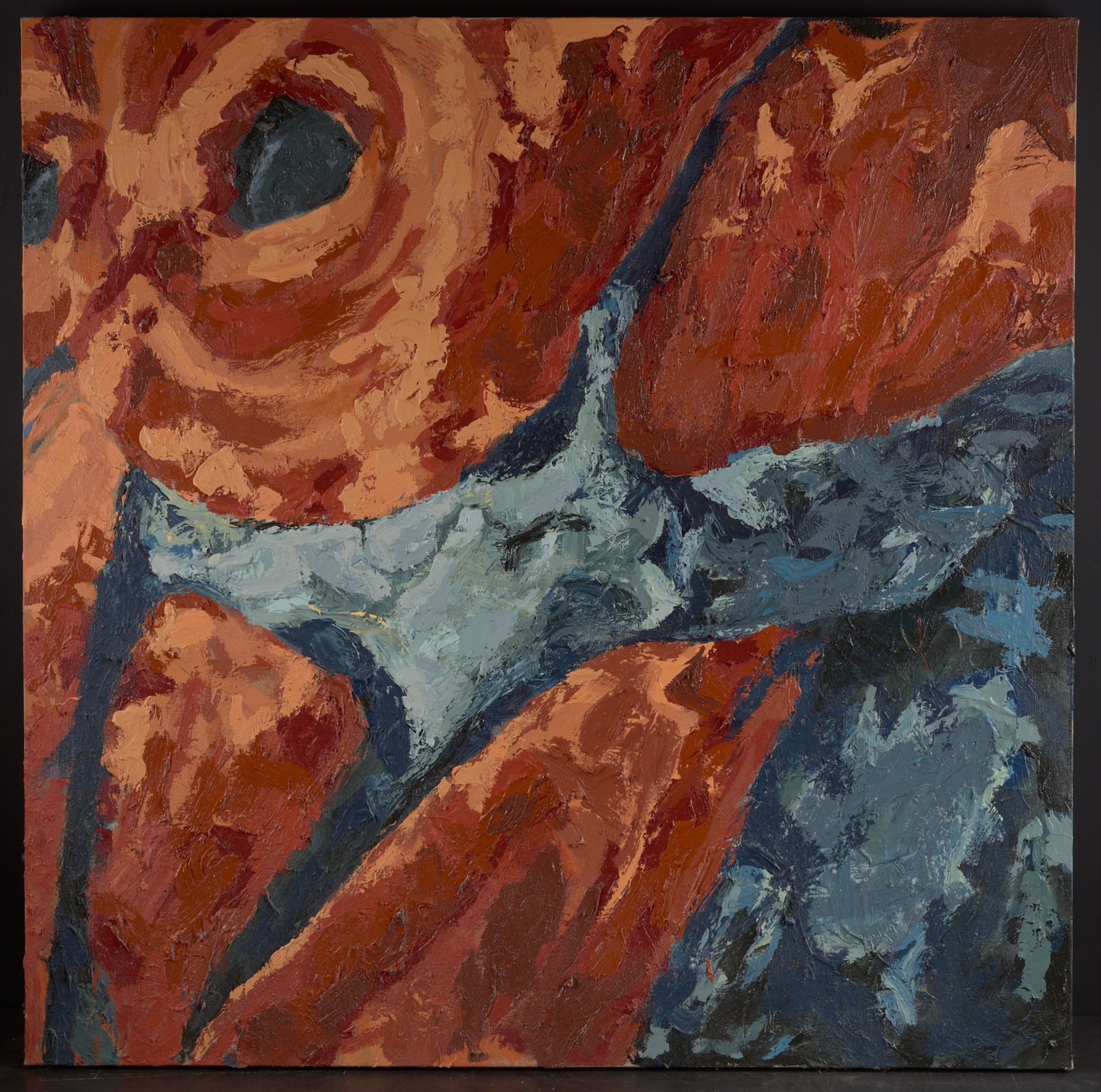21st C., Expressionism, Animal Painting, Dominique Yee (1960- ),Auzoux's Troglodytes Gorilla's
21th Century
Oil on Canvas
120 x 120 x 3 cm
47 1/4 x 47 1/4 x 1 1/8 in
47 1/4 x 47 1/4 x 1 1/8 in
296
€ 4,900.00
Around the middle of the 19th century, the missionary Thomas Savage and the anatomist Jeffries Wyman described a new animal species – the Troglodytes Gorilla – in their article for the Boston Society for Natural History. The French naturalist and anatomical model maker, Dr Louis Auzoux, was eager to dissect and research that gorilla and made this known to the French emperor, Napoléon III. The latter arranged for a specimen, preserved in alcohol, to be transferred from Gabon to France in 1863. Auzoux carried out the dissection in the amphitheatre of the Ecole de Médecine in Paris in the presence of the emperor and his entourage. Later, Auzoux made a three-dimensional didactic model of the gorilla, using paper, clay and cork. The model was what is called an 'anatomic clastique'. This means that it was made to be disassembled into different parts like an actual dissection. It was a valuable aid for university professors and students. Dominique Yee (b. 1960), a Flemish painter with Chinese roots, was inspired by Auzoux's model of the Troglodytes Gorilla and made four acrylic paintings of it. She focused on the gorilla's face and tried to catch the expression of the animal in broad, accurate brushstrokes. The attractiveness of her work lies in the directness.
Vers le milieu du XIXe siècle, le missionnaire Thomas Savage et l'anatomiste Jeffries Wyman ont décrit une nouvelle espèce animale - le gorille troglodyte - dans leur article pour le Boston Society for Natural History Journal. Le Dr Louis Auzoux, naturaliste français et fabricant de modèles anatomiques, était impatient de disséquer et d'étudier ce gorille et l'a fait savoir à l'empereur français, Napoléon III. Ce dernier fait transférer un spécimen, conservé dans l'alcool, du Gabon vers la France en 1863. Auzoux procède à la dissection dans l'amphithéâtre de l'Ecole de Médecine de Paris en présence de l'empereur et de son entourage. Par la suite, Auzoux a réalisé un modèle didactique tridimensionnel du gorille, en utilisant du papier, de l'argile et du liège. Ce modèle était ce que l'on appelle un "plastique anatomique". Cela signifie qu'il a été conçu pour être démonté en différentes parties, à la manière d'une dissection précise. Il s'agissait d'une aide précieuse pour les professeurs d'université et les étudiants. Dominique Yee (née en 1960), peintre flamande d'origine chinoise, s'est inspirée du modèle de gorille troglodyte d'Auzoux et en a fait quatre peintures acryliques. Elle s'est concentrée sur le visage du gorille et a essayé de saisir l'expression de l'animal par des coups de pinceau larges et précis. L'attrait de son travail réside dans son caractère direct.
Vers le milieu du XIXe siècle, le missionnaire Thomas Savage et l'anatomiste Jeffries Wyman ont décrit une nouvelle espèce animale - le gorille troglodyte - dans leur article pour le Boston Society for Natural History Journal. Le Dr Louis Auzoux, naturaliste français et fabricant de modèles anatomiques, était impatient de disséquer et d'étudier ce gorille et l'a fait savoir à l'empereur français, Napoléon III. Ce dernier fait transférer un spécimen, conservé dans l'alcool, du Gabon vers la France en 1863. Auzoux procède à la dissection dans l'amphithéâtre de l'Ecole de Médecine de Paris en présence de l'empereur et de son entourage. Par la suite, Auzoux a réalisé un modèle didactique tridimensionnel du gorille, en utilisant du papier, de l'argile et du liège. Ce modèle était ce que l'on appelle un "plastique anatomique". Cela signifie qu'il a été conçu pour être démonté en différentes parties, à la manière d'une dissection précise. Il s'agissait d'une aide précieuse pour les professeurs d'université et les étudiants. Dominique Yee (née en 1960), peintre flamande d'origine chinoise, s'est inspirée du modèle de gorille troglodyte d'Auzoux et en a fait quatre peintures acryliques. Elle s'est concentrée sur le visage du gorille et a essayé de saisir l'expression de l'animal par des coups de pinceau larges et précis. L'attrait de son travail réside dans son caractère direct.
Join our mailing list
* denotes required fields
We will process the personal data you have supplied in accordance with our privacy policy (available on request). You can unsubscribe or change your preferences at any time by clicking the link in our emails.
